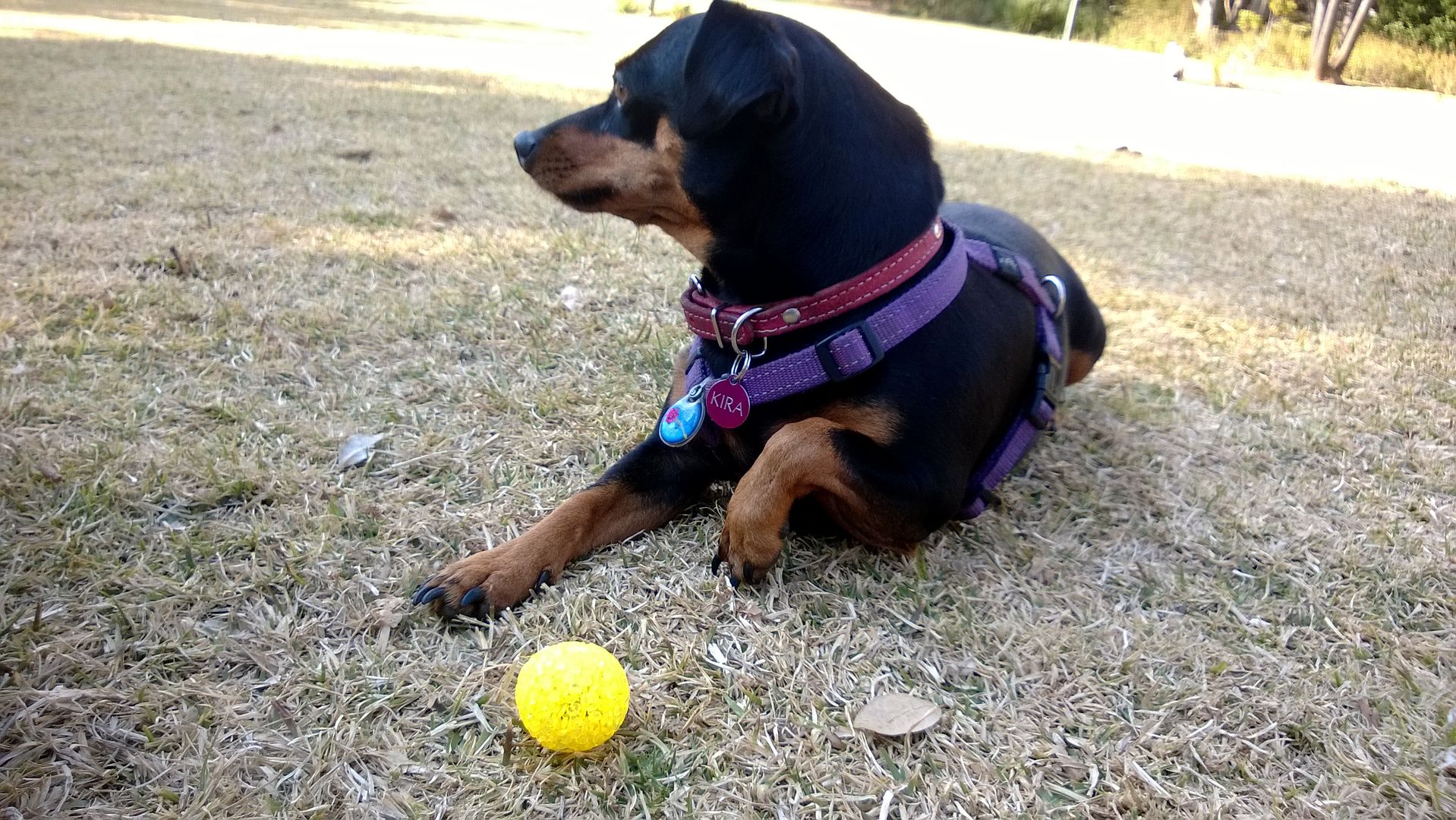There is something very, very cute about a dog standing knee deep in wildflowers.
Of course, it's also pretty much a matter of time before the dog knee deep in wildflowers encounters a bee. Prevention might be best, keeping them out of the flowers, but no one can watch their dog 100% of the time, and many dogs enjoy chasing these buzzy things that move in such a tantalising way ...
Which explains why most bee stings are to the dog's face.
Luckily, compared to a bee to the face, Kira just stepped on one.
Front left paw, poor girl. Second toe. I was woefully unprepared for any kind of accident (time to figure out a small, very portable emergency kit!). Kira, in turn, is not a big fan of having her feet messed with, and she's not shy with her teeth. 15 minutes of arguing to get the stinger out. Half an hour later, she was walking around, and another 15 minutes or so and she was running and playing happily.
Well, so that no one else has to be quite as unprepared as I was, here are some steps to take in case of a bee sting:
1. Be prepared. Get some anti-histamines from your vet, and keep a tweezer in your wallet.
2. Remove the stinger with tweezers, or, lacking that most useful tool, scrape it off with a card or a twig. Keep the card (twig) flat against the skin, and scrape to remove the stinger. Tucking your dog's head between your legs can help make an impromptu bite shield for your hands.
3. If you have clean water, washing the sting site helps make sure the stinger is out and helps prevent infection.
4. If there is swelling, give your dog the anti-histamine, and head home. Apply a cold compress to the area. If there is severe swelling, or any sign of breathing difficulty, go straight to the vet.
5. Once home, a baking soda poultice can help reduce minor swelling. Mix baking soda with just enough water to make a thick paste and use a wrap or a bandage to keep it on. Again, severe swelling warrants an emergency vet trip.
6. Monitor for the next 24 hours, at the first signs of respiratory distress, or if the swelling is not reduced, or if the swelling gets worse, head for the vet. You can repeat the cold compress as necessary.
Kira's foot still itched until late that night, but the next day, all swelling was gone, and she was not worrying it any more. She is luckily not allergic, had she been, we would not have waited out the worst of it in the park.


No comments:
Post a Comment